The pricing ownership problem
I have often wondered who truly owns pricing – or, better yet, who should own pricing? Who should decide the strategy, when, and how often?
At most companies, pricing happens in a conference room with finance worried about margins, product focused on features, and leadership trying to answer to investors and competitors.
The result? Pricing strategies that miss the mark, confuse customers, and leave money on the table.
Why most companies get this wrong
Here are the most common mistakes I’ve seen:
- No clear ownership: Pricing often floats between product, finance, and leadership. PMs focus on building. Finance focuses on margins. Leadership is juggling 50 other things. With no clear owner, pricing becomes an afterthought.
- No true expertise: Lots of people have "touched" pricing, but very few have actually built a strategy, done the research, or tested models end-to-end. Dedicated pricing teams are rare, especially in early and mid-stage companies.
- Avoiding change: Pricing is often avoided out of fear of churn, backlash, or making the wrong move.
- Blindly copying: Teams copy competitor pricing without understanding their own value or customer segments.
- Overcomplicating: Too many tiers and feature gates confuse customers and hurt conversions.
- Set and forget: Pricing needs regular review as your product, customers, competition, and market evolve.
The reality check: When did your company last review pricing strategy? If it's been over 12 months, that's your opening to get involved.
But why should that someone be product marketing?
Why product marketing should own it?
According to Product Marketing Alliance’s 2025 State of Product Marketing report, the top KPIs most PMMs are measured on are: revenue, marketing qualified leads, customer retention, etc. All of those are directly affected by pricing.
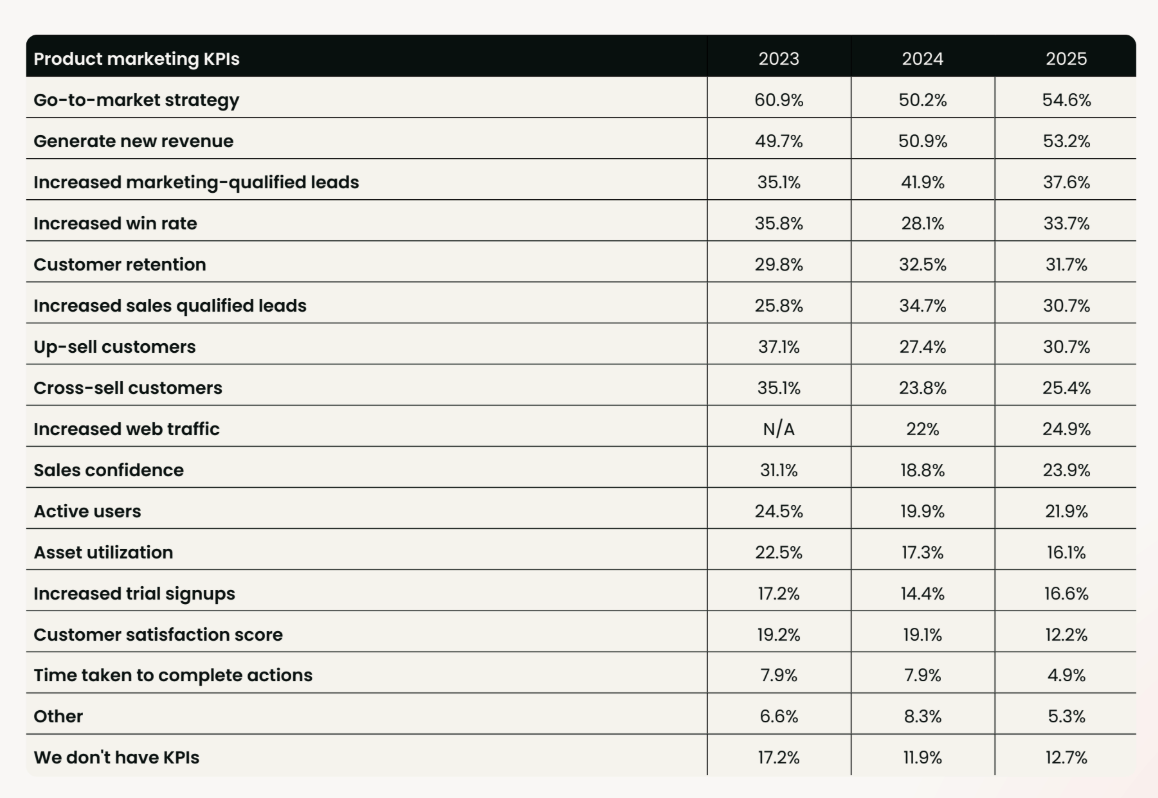
So you'd expect PMMs to be deeply involved in pricing decisions, right?
But here's the reality: The same report shows pricing doesn't even appear in the list of core PMM responsibilities. It's viewed as a leadership skill for directors and above.
Most PMMs have never worked on pricing and aren't involved at all. We're usually brought in at the last minute to write FAQs or polish the pricing page.
That's backwards.
Here's why product marketing is perfect for pricing: it brings together customer psychology, business strategy, and positioning. It's equal parts art and science. You're not just putting a number on a product – you're shaping how customers understand what they are getting.
Done well, pricing drives growth. Done poorly, it slows everything down.
Think about it, pricing has three core components:
💵 Price point – What a customer pays
📦 Packaging – What's included and how it's structured
💝 Perceived value – How customers interpret the value relative to the price
PMMs already sit at the center of all three. We understand customers better than finance. We know the market better than the PMs. We shape value through positioning and messaging.
We live at the intersection of market insight, customer behavior, and positioning – exactly where pricing decisions should be made.
The math is simple: If you're measured on revenue but have no say in pricing, you're missing your biggest lever for impact.
So, how can you, as a PMM, take control of that lever?
How PMMs can own pricing
Pricing is one of the most important decisions a company makes. It needs structure and time – expect 3-6 months or more for major pricing projects. Here's my process:
1. Research and analysis
- Map competitor pricing and positioning across all tiers and segments.
- Analyze win-loss data and churn surveys for switching patterns and feature requests.
- Identify how pricing can support growth, retention, or positioning goals; document current challenges.
2. Segment your customers and align with jobs to be done
- Identify 3–4 key segments based on volume, value, and your ability to win.
- Study their jobs-to-be-done, willingness to pay, and perception of value vs. competition.
3. Select strategy and model
- Based on steps 1 & 2, develop different pricing approaches and positioning concepts. This is where you decide between models like freemium vs. free trial, usage-based vs. seat-based, tiered vs. add-ons.
- Create 2-3 pricing concepts for research with clear positioning for each, focusing on how you'll communicate value, structure packages, and handle objections.
4. Research and approvals
I'd suggest hiring a pricing strategist if none is on your team and an agency to run pricing research, as statistical significance amongst key user segments is critical.
- Test willingness to pay, optimal price points, and feature mix preferences across segments. Use methods like Van Westendorp Price Sensitivity Meter (price range), conjoint analysis (tier configurations and price points), or MaxDiff (feature prioritization), depending on your requirements.
- Based on the studies, extrapolate volume impact and financial projections. Work with finance for revenue modeling and build a business case with clear ROI projections and risk mitigation plans. Present your findings to pricing councils and leadership for final approvals.
5. Launch and rollout
Pricing rollout matters as much as strategy. This is where PMMs are often involved.
- Develop a comprehensive GTM plan with a communications calendar, testing phases, and feedback loops.
- Coordinate cross-functional execution: sales training on objections, customer success scripts, marketing asset updates, legal reviews, customer messaging timeline, internal FAQs.
- Track key metrics: revenue per customer, conversion rates by segment, CAC, churn, sales cycle, satisfaction.
- Iterate rapidly based on early results and market response.
That's the process. But pricing is a team effort, and here's how to structure roles:
The ideal pricing team
- Driver: PMM, PM, or pricing manager (if available)
- Approver: Finance and leadership
- Contributors: Design, research, sales, customer success, legal, data analytics
- Informed: Engineering, marketing, broader org
How I did it
My pricing journey started in CPG as a brand manager. We ran full pricing studies, tested offers, and managed price points down to the decimal. That foundation taught me different pricing techniques, research methods, and how to understand customer willingness to pay.
When I moved to tech, I brought that pricing mindset with me. Here are a few ways I was able to influence pricing:
At StyleSeat, I led the pricing strategy, revamped pricing, and identified missed revenue opportunities along with leadership and product. I made the pricing tiers simple and transparent based on churn, NPS, jobs-to-be-done, and pricing studies.
We implemented several key changes: added competitive fees for instant payouts (previously free), feature-gated high-value features using willingness to pay survey insights to drive upsells, and tested pricing tiers, fee structures, and price points to maximize conversions.
These changes captured revenue we were previously leaving on the table and reduced churn.
At Dropbox, I contributed to a major pricing project and helped identify licensing opportunities for adjacent user segments. I partnered with PM and research on competitive analysis, concept development, messaging tests, and tier design, helping the team move faster despite limited resources.
I had the opportunity to work on these pricing projects. But you don't need to wait for that opportunity. Just start connecting the dots between the data you already track and pricing insights.
How to get started
If you're a senior PMM, audit your top three competitors' pricing. Review churn surveys, feature requests, and customer feedback by segment. Identify gaps or segments with untapped value.
Build a case showing how current pricing is leaving money on the table and take it to leadership. Don't ask for help. Show why you should lead.
If you're a junior PMM, start with what you have. Use support tickets, customer interviews, and churn notes. Look for pricing patterns. Volunteer to update pricing FAQs or summaries. Share insights. Ask to join pricing projects. Show that you think beyond content.
If you're a PMM waiting to be invited into pricing conversations, stop waiting. You're better equipped than most people making these decisions. Learn the techniques and research methods. Go own it, co-own it, or at the very least get involved.
Let me know who owns pricing at your company and your thoughts on ownership. Follow me on LinkedIn for more PMM stuff!





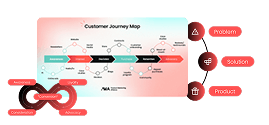




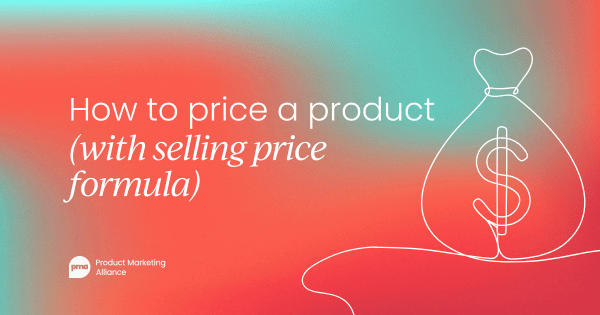






 Follow us on LinkedIn
Follow us on LinkedIn

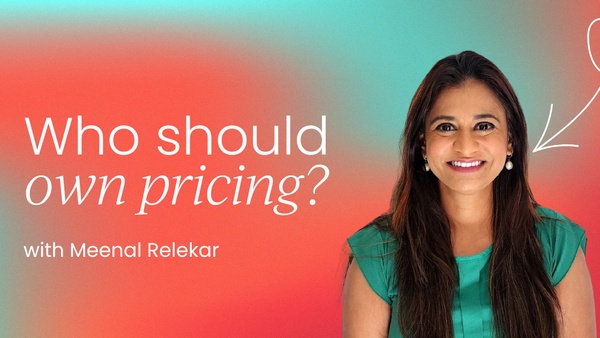


.svg)
Start the conversation
Become a member of Product Marketing Alliance to start commenting.
Sign up now